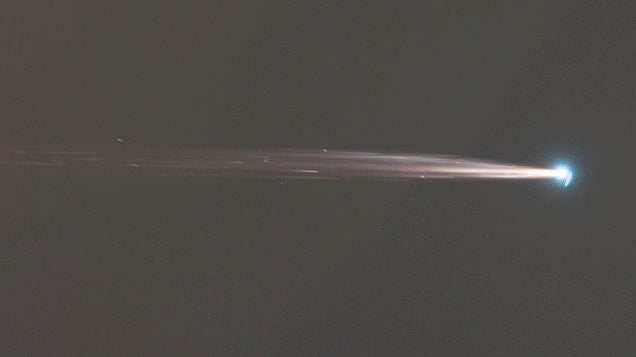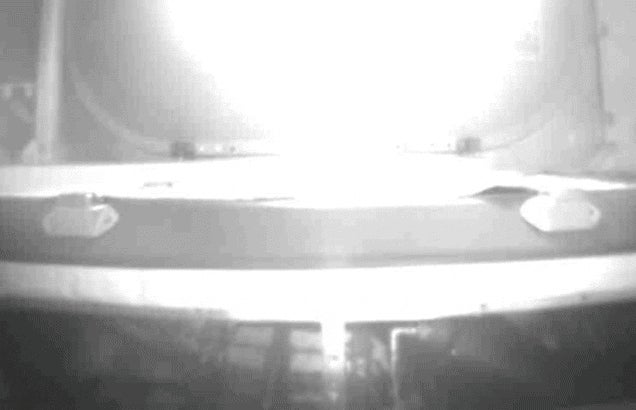
European Space Agency engineers are going where no human will ever go. They've put a camera inside an automated spacecraft full of garbage (including sewage) to see what will happen during its reentry into Earth's atmosphere this weekend.
The two objects in the photo above are a special infrared camera (in the middle, bolted onto an Automated Transfer Vehicle panel) and a spherical SatCom device, coated in heat resistant ceramic shielding (on the right). On the 14th of February they are going to broadcast approximately 10 seconds of footage of fiery hell over an uninhabited area of the Pacific Ocean.

This amazing image of reentry fireworks was captured from the International Space Station on 2 November 2013. In this animated gif we can observe European Space Agency's fourth Automated Transfer Vehicle (ATV), Albert Einstein, disintegrating and burning up in the atmosphere with 1.6 tonnes of waste. Now, if everything goes as planned, we will witness the disintegration of the the fifth ATV, called Georges Lemaître, from the inside, thanks to the so called Break-Up Camera (BUC) system, which was installed onto the forward hatch of Europe's space ferry on Monday by ESA astronaut Samantha Christoforetti.
The camera will be activated by the acceleration of the ATV. Before burning up with the space station junk, the battery-powered 320x256 resolution infrared camera will record the shifting temperatures of the interior at 10 frames per second showing approximately the last 10 seconds of the spacecraft as it reenters the atmosphere. The footage will be transmitted to the SatCom device, which is set to survive the sultry 1500°C of reentry heat and the spacecraft's break-up, so it can forward the imagery to an Iridium telecommunications satellite while falling to Earth at around 7 km/s. The surrounding plasma known to block radio signals, but scientists hope is that its omnidirectional antenna will be able to exploit a gap in its trail. If not, signalling will continue after the plasma has cleared – somewhere below 40 km altitude.

ESA's supply and support ferry ATVGeorgesLemaître approaches the International Space Station for docking. The fifth and last Automated Transfer Vehicle docked with the weightless research centre on 12 August 2014. ATV-5 delivered 6.6 tonnes of supplies,including food, water, fuel, clothes and experiment hardware. (Photo: O. Artemyev/Roscosmos)
What is the point of this experiment, you ask? The short answer is that this is an opportunity to gather detailed information that will help future spacecraft reentries.
Explains Neil Murray, overseeing the project for ESA:
We don't know exactly what we might see – might there be gradual deformations appearing as the spacecraft comes under strain, or will everything come apart extremely quickly? [...] Whatever results we get back will be shared by our teams, and should tell us a lot about the eventual reentry of the International Space Station as well as spacecraft reentry in general. [...] For the future, now the development has already been done, the camera has broader potential as a 'blackbox for reentry', flyable on a wide range of satellites and launchers.
In 2012 the Japanese space agency's i-Ball camera took a few images of its supply ferry, Kounotori 3 (HTV-3) breaking up. This is what Jaxa managed to gather from that experiment:

Another i-Ball was planned to fly with ATV-5, but was lost in the Antares rocket explosion in Oct 2014. Cannot wait to see the results this time!
Top photo: ESA
from ffffff http://gizmodo.com/this-camera-is-going-to-hell-and-will-send-us-pictures-1685227698
via IFTTT







0 comentarios:
Publicar un comentario